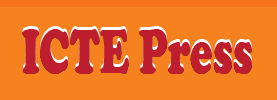Documenting a Visually Impaired Learner’s Experience Using Audible During COVID-19 Pandemic
DOI:
https://doi.org/10.2991/assehr.k.210226.005Keywords:
Visually impaired, Audible, Assistive technology, Inclusive educationAbstract
Language instructors face various challenges in fulfilling their tasks. Addressing students’ special needs with different needs is one of the greatest challenges confronting them. Such a challenge could be even more daunting when there is little support provided by the institution for special needs students. This paper focuses on documenting how a visually impaired language learner uses available technology to assist him in attending a language course at the tertiary level. This paper highlights several advantages as well as disadvantages of an application called Audible from the perspective of a visually impaired language learner. Apart from that, the student’s hopes and expectations related to the application were also recorded. This documentation may help enlighten relevant parties, including language instructors, application designers, or even policymakers, on the challenges faced by visually impaired students in learning. This, in turn, will help the relevant parties to provide better assistance to the students.
References
R. Dunn, & K. Dunn, Using learning styles data to develop student prescriptions, In J.W. Keefe (ed.), Student learning styles diagnosing and prescribing programs, pp. 109-122, 1979, Reston, VA: National Association of Secondary School Principals
Bernama, Cabaran mengajar dalam talian, Sinar Harian, 2020, April 2, https://www.sinarharian.com.my/article/76874/BERITA/Nasional/Cabaran-mengajar-dalam-talian
World Bank, Pivoting to Inclusion: Leveraging Lessons from the COVID-19 Crisis for Learners with Disabilities. Washington DC: International Bank for Reconstruction and Development/The World Bank, 2020, http://pubdocs.worldbank.org
A. That, A short history of the audiobook, 20 years after the first portable digital audio device, Nov 22, 2017, https://www.pbs.org/newshour/arts/a-short-history-of-the-audiobook-20-years-after-the-first-portable-digital-audio-device
https://www.Audible.com/about/our-company/
Audible Inc. - Company Profile, Information, Business Description, History, Background Information on Audible Inc., Advameg, Inc., 2020, https://www.referenceforbusiness.com/history2/20/Audible-Inc.html#:~:text=1995%20Audible%20is%20launched%20by,death%20of%20its%20new%20CEO.
F. Paul, Amazon to buy Audible for $300 million, Consumer goods and retail, January 31, 2008, https://www.reuters.com/article/us-Audible-amazon-idUSN3129158120080131
I. L., Bailey & A. Hall, Visual impairment: An overview, New York: AFB Press, 1990
World Health Organisation, ICD-11 International Classification of Diseases for Mortality and Morbidity Statistics (Eleventh Revision), 2018, https://icd.who.int/browse11/l-m/en#/http%3a%2f%2fid.who.int%2ficd%2fentity%2f1103667651
MyHEALTH, Kementerian Kesihatan Malaysia, 2020, https://www.pbs.org/newshour/arts/a-short-history-of-the-audiobook-20-years-after-the-first-portable-digital-audio-device http://www.myhealth.gov.my/en/blindness-visual-impairment/
S. Cheng & C. Lai, Facilitating learning for students with special needs: a review of technology-supported special education studies. J. Comput. Educ. 7, pp. 131–153, 2020, https://doi.org/10.1007/s40692-019-00150-8
S.Z. Satzhanova, Teaching English language for students with special needs (visually impaired and blind) in the system of inclusive education, Current State and Prospects for the Development of Scientific Thought, Astana, Kazakhstan, April 13, 2017
C. Hiago & T. Sade, The learning autonomy of the visually impaired students in language education and language acquisition, Journal of Special and Inclusive Education, 13(1), 2020, pp. 27-49
S. S. Zahra & M. W. Zia, Academic use of smartphones for social development of visually impaired students of University of Karachi: A study of android Smartphone applications by VI students, Multidisciplinary Student Research Conference (MDSRC) - 2017 Proceedings, 27-28 December, 2017, Wah/Pakistan
M.S. Retorta & V.L.L. Cristovão, Visually-Impaired Brazilian Students Learning English with Smartphones: Overcoming Limitations. Languages, 2017, 2, 12.
S. Susanto & D.S. Nanda, Teaching and learning English for visually impaired students: An ethnographic case study, English Review: Journal of English Education, 7(1), 2018, pp. 83-92
J. Olivares, The The Enhancement of English Speaking Ability of the Visually Impaired Students Using Blended Learning, 2020, Udon Thani Rajabhat University
S. Melie, G. William, S. Susanto, & D. S. Nanda, Foreign language training for visually impaired students in South East Asian countries, Asian Journal of Special Education, 17(1), 2020, pp. 21-38.
B. Powis & J. L. Macbeth, We know who is a cheat and who is not. But what can you do?”: Athletes’ perspectives on classification in visually impaired sport, International Journal for the Sociology of Sports, February 3, 2019, pp. 588–602 https://doi.org/10.1177/1012690218825209
H. J. C. Ravensbergen, D. L. Mann & S. J. Kamper, Expert consensus statement to guide the evidence-based classification of Paralympic athletes with vision impairment: A Delphi study, British Journal of Sports Medicine, 50(7), 2016, pp. 386–391
Kawal Gill, Empowering Visually Impaired Students through E-Learning at Higher Education: Problems and Solutions, IOSR Journal Of Humanities And Social Science (IOSR-JHSS), vol. 22(8), 2017, pp. 27–35
https://www.researchgate.net/publication/335025693_Empowering_Visually_Impaired_Students_through_E-Learning_at_Higher_Education_Problems_and_Solutions [accessed Nov 20 2020].
D. Little, Learning as Dialogue: The Dependence of Learner Autonomy on Teacher Autonomy, System, 23, 1995, pp. 175-182,
http://dx.doi.org/10.1016/0346-251X(95)00006-6
Ahmad Shamsuri Muhamad, Malaysia sorely lacking braille facilities, says Society of the Blind, 31 August, 2019, Bernama
A. Oleszkiewicz, K. Pisanski, K. Lachowicz-Tabaczek, et al., Voice-based assessments of trustworthiness, competence, and warmth in blind and sighted adults, Psychon Bull Rev 24, 2017, pp. 856–862, https://doi.org/10.3758/s13423-016-1146-y
S. A. McLeod, Kolb - learning styles, Simply Psychology, 2017, October 24, https://www.simplypsychology.org/learning-kolb.html
M. Hersh & S. Mouroutsou, Learning technology and disability—Overcoming barriers to inclusion: Evidence from a multi-country study, British Journal of Educational Technology, 50, 2019, pp. 3329-3344,
J. Corpuz, Best audiobook apps in 2020, February 24, 2020, https://www.tomsguide.com/round-up/best-audiobook-apps
B. Gelbart, Mobile app development: The 9 best apps for book lovers, August 8, 2020, https://fueled.com/blog/best-apps-for-book-lovers/
Downloads
Published
How to Cite
Issue
Section
License
Copyright (c) 2021 Nor Fazlin Mohd Ramli, Noor Ahnis Othman, Aini Akmar Mohd Kasim, Mohammad Radzi Manap, Nurzeti Abdul Ghafar, Mohamad Asri Arshad

This work is licensed under a Creative Commons Attribution 4.0 International License.
Copyright
The copyright of all articles published in the Proceedings of the AsiaCALL International Conference (paic) remains with the Authors, i.e. Authors retain full ownership of their article. Permitted third-party reuse of the open access articles is defined by the applicable Creative Commons (CC) end-user license which is accepted by the Authors upon submission of their paper. All articles in the aicp are published under the CC BY-NC 4.0 license, meaning that end users can freely share an article (i.e. copy and redistribute the material in any medium or format) and adapt it (i.e. remix, transform and build upon the material) on the condition that proper attribution is given (i.e. appropriate credit, a link to the applicable license and an indication if any changes were made; all in such a way that does not suggest that the licensor endorses the user or the use) and the material is only used for non-commercial purposes.








